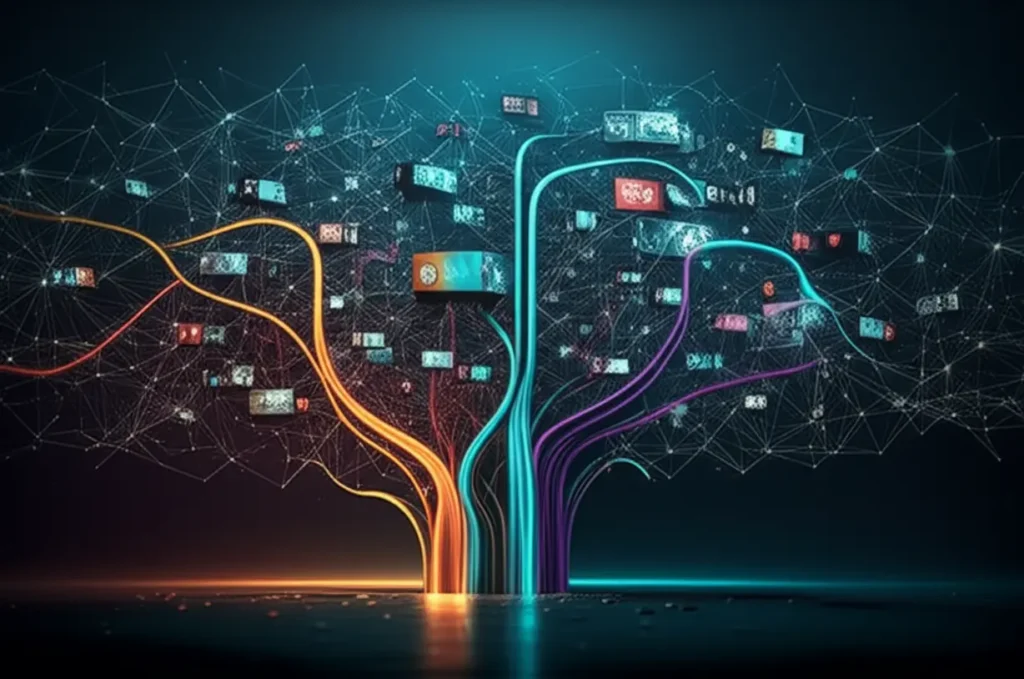Nonprofit organizations face immense pressure to deliver significant impact with finite resources. You constantly seek innovative strategies to overcome operational hurdles, stretching every dollar and hour.
You grapple with administrative burdens, fluctuating donor engagement, and the complex task of accurately measuring your true societal impact.
Embracing AI isn’t just about automation; it’s a strategic pathway to redefine what you can achieve, empowering you to amplify your mission and build a more resilient future.
Unleashing Nonprofit Potential with AI: Boosting Operational Efficiency
You can significantly expand your nonprofit’s capacity by integrating artificial intelligence strategically. This revolution transcends mere technology, allowing you to achieve more good with your existing resources.
Early AI adoption gives you a distinct strategic advantage. You innovate faster, adapt to evolving needs, and deliver services more effectively.
Ultimately, AI enhances your organization’s ability to fulfill its core mission. You transform how you operate and maximize your reach.
AI applications are fundamentally transforming operational efficiency across the nonprofit sector. Automating routine administrative tasks frees up your valuable human resources.
You can redirect your staff to higher-value activities, focusing on mission-critical work. This shift not only saves time but also significantly enhances overall productivity.
AI vs. Manual Processes: A Productivity Showdown
Manual administrative tasks consume countless hours weekly. Your staff spend valuable time on data entry, scheduling, and report generation, diverting them from direct impact.
AI automation tools handle these repetitive processes with speed and accuracy. You reduce human error significantly, ensuring data integrity and streamlining workflows.
Consider the “Compassionate Connect” foundation, which struggled with manual volunteer scheduling. They implemented an AI-powered scheduling system, reducing staff time spent on scheduling by 30%.
This allowed the foundation’s team to focus on volunteer training and engagement. They saw a 15% increase in volunteer retention within six months, directly boosting their program delivery capacity.
Furthermore, AI-driven analytics optimize resource allocation effectively. By identifying patterns and predicting needs, you make smarter decisions about deploying funds and personnel.
You ensure every dollar and hour contributes maximally to your cause. This data-driven approach strengthens your ability to serve communities more effectively.
Essential Features of AI Automation Tools
When selecting AI automation tools, prioritize robust integration capabilities. Your chosen solution must seamlessly connect with your existing CRM, accounting software, and project management platforms.
Scalability is another crucial feature. The tool should grow with your organization, handling increasing data volumes and expanding operational needs without significant overhauls.
Look for user-friendly interfaces that minimize training time for your staff. Intuitive design ensures quicker adoption and maximum utilization across your team.
Customization options are also vital. You need to tailor automation rules and workflows to your nonprofit’s unique processes and specific requirements.
Finally, ensure strong reporting and analytics features. You need clear insights into performance, identifying areas for further optimization and demonstrating efficiency gains.
Step-by-Step: Automating Data Entry for Grants
First, identify the repetitive data entry tasks in your grant management process. For instance, extracting information from grant proposals into your donor database is a prime candidate.
Next, select an AI-powered data extraction tool. You can find solutions that use Optical Character Recognition (OCR) and Natural Language Processing (NLP) to read documents.
Train the AI system on your specific document types and data fields. You show it examples of where to find the grant amount, submission date, and applicant details.
Integrate the AI tool with your CRM or grant management software. This allows for direct data transfer, eliminating manual copying and pasting.
Finally, establish a monitoring and validation process. You regularly review the AI’s accuracy initially, making adjustments as needed to ensure flawless data entry.
Revolutionizing Fundraising and Donor Engagement
For fundraising, AI offers powerful, actionable insights. You can segment donor databases with unprecedented precision, identifying high-potential major donors.
AI even personalizes communication for maximum impact, crafting messages that resonate individually. This allows for more targeted and successful campaigns, optimizing your return on investment.
AI also significantly enhances supporter engagement. Chatbots can provide instant answers to common questions, improving the donor experience at any hour.
Additionally, AI-driven content creation keeps your supporters informed and emotionally connected to your mission. You foster deeper relationships and encourage sustained giving.
Predictive analytics help identify at-risk donors, enabling proactive intervention and personalized retention strategies. You minimize donor churn and maintain a stable funding base.
Predictive Analytics vs. Traditional Segmentation
Traditional donor segmentation relies on demographic data and past giving tiers. You categorize donors into broad groups, leading to generic outreach efforts.
Predictive analytics, however, uses complex algorithms to analyze giving patterns, engagement history, and even external socioeconomic factors. You identify micro-segments and forecast future behavior.
The “Hope Haven Network” in Chicago utilized AI to analyze their donor base. They discovered a segment of infrequent, small-dollar donors who showed high potential for major gifts if engaged differently.
By tailoring personalized outreach based on AI predictions, they increased major gift commitments from this segment by 20% in one year. They also improved overall donor retention by 10%.
This data-driven approach maximizes your fundraising potential. It ensures a sustainable financial base for your crucial programs and services.
You strengthen your financial stability, allowing you to plan for long-term impact rather than constant short-term fundraising cycles.
Data Security and LGPD Compliance in Donor Management
Protecting donor data is paramount for maintaining trust. When using AI in fundraising, you must implement robust data security measures.
Ensure all donor information is encrypted, both in transit and at rest. You use secure servers and access controls to limit who can view sensitive data.
Compliance with data protection laws like LGPD (General Data Protection Law in Brazil) or GDPR (Europe) is non-negotiable. You obtain explicit consent for data collection and usage.
Regularly audit your AI systems and data processing activities. You verify compliance and identify potential vulnerabilities before they become issues.
Transparency with your donors about how their data is used, even for AI-driven personalization, builds credibility. You foster stronger, more ethical relationships.
Importance of Support for CRM-AI Integrations
Integrating AI with your existing CRM can be complex. You need reliable technical support to navigate setup, troubleshooting, and ongoing maintenance.
Ensure your AI provider offers comprehensive support services, including dedicated account managers or a responsive help desk. You want quick resolutions to any issues.
Look for providers who offer regular updates and patches, keeping your AI tools secure and optimized. You stay ahead of technological advancements and potential threats.
Prioritize thorough training for your team on the integrated AI solutions. You empower your staff to fully leverage the new capabilities effectively.
Good support ensures your AI investment delivers continuous value, preventing downtime and maximizing the efficiency gains you expect.
Data-Driven Impact: Measuring and Maximizing Social Good
Measuring program impact is crucial, yet often resource-intensive for your nonprofit. AI profoundly enhances your ability to process and interpret vast amounts of data.
This provides deep insights into program effectiveness, beneficiary needs, and societal trends. You make better, more informed strategic choices.
These insights are vital for refining your industry strategy and designing more impactful interventions. You ensure your efforts are precisely targeted.
Consequently, you make informed decisions, ensuring your programs yield the greatest possible positive outcomes. You move beyond assumptions to tangible evidence.
AI tools streamline impact measurement and reporting. They can analyze vast datasets to demonstrate program effectiveness with precision.
AI for Impact Reporting: Qualitative vs. Quantitative Insights
AI excels at processing quantitative data, like participant demographics, service delivery metrics, and outcome statistics. You can quickly identify trends and correlations from large datasets.
However, true impact often includes qualitative insights, such as beneficiary testimonials and case studies. You use AI’s natural language processing to analyze sentiment and extract themes from textual feedback.
The “Green Futures Initiative” implemented an AI analytics platform to track their reforestation projects. They collected satellite imagery, tree growth rates, and community engagement data.
The AI system processed this information, showing a 25% increase in sapling survival rates due to optimized planting schedules. They used this data to secure a 15% larger grant in the next cycle.
You combine these insights to paint a comprehensive picture of your impact. This data-driven approach ensures accountability and fosters trust with donors and stakeholders.
Such analytical prowess provides valuable insights into program effectiveness. This enhances reporting to stakeholders and informs future strategic decisions for your organization.
Market Data and Financial Analysis: The ROI of Data-Driven Impact
Industry reports indicate that approximately 50% of nonprofits struggle to effectively quantify their social impact. This often leads to a potential 10% loss in annual grant funding due to inadequate reporting.
Investing in AI for impact measurement can dramatically change this. You gain the tools to demonstrate clear, measurable outcomes, which is critical for securing grants.
Consider this calculation: If your nonprofit currently receives $500,000 in grants annually, a 10% loss due to poor reporting means you miss out on $50,000. If you invest $15,000 in an AI analytics platform that helps you prevent this loss, your ROI is substantial.
You can calculate your ROI: (($50,000 (avoided loss) – $15,000 (AI investment)) / $15,000 (AI investment)) * 100%. This equals a 233% return on investment within the first year.
This demonstrates how AI transforms potential losses into significant gains, making it a financially astute investment for your nonprofit.
Navigating the Ethical Landscape: Responsible AI for Nonprofits
Navigating the ethical landscape is paramount for you as a nonprofit adopting AI. While the promise of enhanced capacity is significant, you must ensure these powerful tools serve good without unintended harm.
Ethical considerations must guide every step of your AI implementation. You commit to responsible AI adoption from the outset.
A primary concern revolves around data privacy and security. You often handle sensitive information about beneficiaries and donors, making robust protocols essential for new AI applications.
Protecting this data builds trust and maintains the integrity of your mission. You prioritize the security of every piece of information you manage.
Furthermore, AI systems can inadvertently perpetuate existing societal biases embedded in their training data. You must actively identify and mitigate bias in your AI applications.
Algorithmic Bias vs. Human Oversight: Ensuring Fairness
AI algorithms, trained on historical data, can unintentionally learn and amplify existing societal biases. This might lead to unfair outcomes in resource allocation or beneficiary selection.
Human oversight is critical. You must regularly review AI decisions and outputs, ensuring they align with your ethical values and fairness principles.
The “Unity Outreach Project” developed an AI tool to identify communities most in need of food assistance. They discovered the initial AI model inadvertently favored urban areas due to data biases.
By implementing a human review panel and adjusting the AI’s training data, they rebalanced the algorithm. This ensured equitable distribution across both urban and rural communities, demonstrating commitment to fairness.
Transparency in AI operations is also vital. You strive for explainable AI, where decisions made by algorithms are understandable to human users.
This accountability fosters donor confidence and stakeholder trust, crucial for sustainable capacity growth. You build enduring relationships based on clarity and integrity.
Implementing an Ethical AI Framework: A Step-by-Step Guide
First, define your nonprofit’s core ethical values regarding data, equity, and transparency. You establish these as the guiding principles for all AI initiatives.
Next, conduct a comprehensive impact assessment before deploying any AI solution. You identify potential risks for bias, privacy breaches, or unintended consequences.
Establish clear guidelines for data collection, usage, and storage. You ensure all practices comply with relevant data protection regulations like LGPD or GDPR.
Implement mechanisms for human oversight and intervention. You empower your staff to override AI decisions if they appear biased or inappropriate.
Finally, commit to ongoing monitoring and regular reviews of your AI systems. You adapt your framework as technology evolves and new ethical challenges emerge.
Scaling Impact with AI Agents: Your Force Multiplier
To truly unlock your nonprofit’s capacity, consider specialized tools like AI Agents. These intelligent assistants handle repetitive tasks, from customer support to data analysis, operating 24/7.
They ensure consistent and efficient operations, freeing your human staff for more complex, empathetic interactions. You amplify your team’s reach and effectiveness.
AI Agents allow you to scale your impact without proportionally increasing overhead. You expand your mission without straining your budget or human resources.
These advanced AI applications represent a significant leap forward in nonprofit capacity. They automate complex workflows, from managing volunteer communications to handling initial inquiries effortlessly.
They free up your human staff from routine tasks, allowing them to focus on high-value interactions. This strategic deployment not only improves efficiency but also enables your nonprofit to expand its impact.
Generic AI vs. Specialized AI Agents: Tailored Solutions
Generic AI tools offer broad capabilities like data processing or basic automation. You can adapt them for various tasks, but they often require significant customization.
Specialized AI Agents, however, are purpose-built for specific functions, offering deep expertise and tailored functionalities. They integrate seamlessly into targeted workflows.
“Global Reach Aid” integrated Evolvy’s AI Agents to manage volunteer recruitment and grant research. The AI Agents handled initial applicant screening and identified relevant grant opportunities.
This resulted in a 35% reduction in time spent on volunteer onboarding. It also led to a 20% increase in grant applications submitted, allowing the organization to expand its field operations significantly.
You get highly efficient, precise automation for critical functions. This enables your nonprofit to scale impact more broadly and deeply than ever before.
These specialized solutions optimize volunteer management, ensuring the right people are in the right roles. You maximize volunteer contributions effectively for your cause.
AI Agents also augment grant writing and research. They identify relevant grant opportunities and even draft sections of proposals, saving considerable staff time.
These applications streamline the grant writing process, making it more efficient. While AI can draft, you ensure human oversight for ethical alignment and narrative authenticity.
Consequently, you can pursue more funding avenues and secure vital resources for your mission. You expand your opportunities for growth and sustainability.
Essential Features of AI Agent Platforms
When evaluating AI Agent platforms, prioritize strong customization capabilities. You need to configure agents to specific tasks, communication styles, and decision-making parameters unique to your nonprofit.
Seamless integration with your existing CRM, communication tools, and databases is non-negotiable. The agents must work harmoniously within your current tech stack.
Look for robust natural language processing (NLP) capabilities. Your AI Agents should understand and respond to complex human inquiries effectively, offering intuitive interactions.
Scalability is also crucial. The platform should support an increasing number of agents and handle expanding operational demands as your nonprofit grows.
Finally, ensure the platform has advanced security features and compliance with data privacy regulations. You protect sensitive information handled by your agents.
For a deeper dive into how AI Agents can revolutionize your operations, explore Evolvy’s AI Agents. You will discover how they can become your nonprofit’s most powerful force multiplier.






